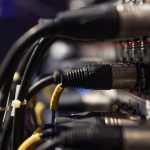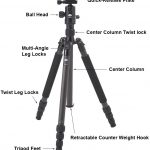Bathymetry, often referred to as the “topography of the ocean floor,” stands as a cornerstone in the realm of marine exploration. As we navigate the challenge of mapping the vast, often enigmatic expanses beneath our planet’s waters, the precision and reliability of our technological tools take center stage. Enter GNSS receivers, the unsung heroes of modern bathymetric endeavors.
These devices, armed with cutting-edge features and sophisticated algorithms, are rapidly becoming non-negotiable assets for marine researchers and surveyors. Their prowess lies not just in their ability to capture data, but in the unparalleled accuracy they bring to the table. In an age where every meter of the ocean floor can reveal secrets about our planet’s history, climate, and biodiversity, GNSS receivers illuminate these mysteries with newfound clarity. As we continue our quest to unravel the marine world’s concealed terrains, it’s evident that the fusion of GIS technology and bathymetric science is reshaping our understanding of the oceans’ hidden tapestry.
Bathymetry: A Quick Dive
Bathymetry, derived from the Greek words “bathys” (deep) and “metron” (measure), refers to the measurement of underwater depths, essentially charting the topography of the ocean floor. This science holds a pivotal role in several disciplines:
Marine Biology: Bathymetric maps aid biologists in understanding underwater habitats, helping them identify regions rich in biodiversity or areas that require conservation efforts.
Geology: Geologists rely on bathymetric data to study underwater geological formations, tectonic plate boundaries, and volcanic activities. These maps provide insights into past seismic events and potential future geological phenomena.
Navigation: For centuries, navigators have depended on depth measurements to ensure safe maritime routes, avoiding underwater obstructions and treacherous terrains.
Historically, bathymetric surveys were conducted using rudimentary methods. Mariners would drop weighted ropes or lead lines overboard, measuring the depth based on how much line was let out before the weight hit the seabed. Soundings, another traditional method, involved emitting sound waves and calculating depth based on the time taken for the echo to return. The evolution of technology has since provided us with advanced tools, like GNSS receivers, that offer a more comprehensive and accurate view of the underwater world when used in combination with sounding.
Key Features of an Ideal GNSS Receiver for Bathymetry
Bathymetric surveys, which delve into the intricate landscapes beneath our oceans, demand tools that are both sophisticated and dependable. GNSS receivers have become pivotal in this realm, offering unparalleled precision in underwater mapping. Here are the essential features that set apart an ideal GNSS receiver for bathymetric purposes:
High Precision: The marine world is vast and complex. An ideal GNSS receiver must offer top-notch precision, ensuring every depth measurement is spot-on.
Rapid Initialization: In marine surveys, time is a valuable commodity. Receivers that boot up quickly and are ready for immediate data collection are indispensable, minimizing downtime and maximizing efficiency.
Magnetic Disturbance Immunity: The oceans are teeming with potential sources of magnetic interference, from natural phenomena to man-made equipment. A superior GNSS receiver should resist these disturbances, guaranteeing consistent and accurate readings.
Robust Connectivity: To ensure data reliability, the receiver should seamlessly connect with various satellite systems. This broad compatibility ensures data accuracy, even in the most remote marine regions.
Durability and Water Resistance: The marine environment is inherently challenging. Saltwater, pressure variations, and potential impacts demand a GNSS receiver that’s robust, water-resistant, and built to endure.
Extended Battery Life: Prolonged marine expeditions require equipment that can last. A GNSS receiver with a long battery life ensures continuous data collection without frequent recharging interruptions.
An optimal GNSS receiver designed for bathymetric applications is a masterful fusion of advanced technology and pragmatic, user-centric functionalities. It’s not just about capturing precise underwater topographical data; it’s about doing so with efficiency and ease. By integrating state-of-the-art tech with intuitive features, these receivers ensure that marine surveys are not only comprehensive in detail but also smooth in execution. In the vast realm of marine exploration, the right GNSS tool can be the difference between a standard survey and an exceptional one.
Conclusion
The vast expanse of our oceans has long been a source of mystery and wonder. Bathymetry, the study of the ocean floor, has evolved over the years, transitioning from rudimentary depth measurements to sophisticated mapping techniques. The introduction of GNSS receivers has been a game-changer in this realm, offering unparalleled precision in underwater surveys. As we continue to explore the depths, the importance of accurate and detailed bathymetric data becomes increasingly evident. It aids in understanding marine ecosystems, studying geological formations, and ensuring safe navigation. In essence, GNSS technology is not just enhancing our current understanding but paving the way for future marine explorations. As we stand on the cusp of new discoveries, it’s tools like these that will guide our journey, shedding light on the ocean’s hidden treasures and deep-seated secrets.











